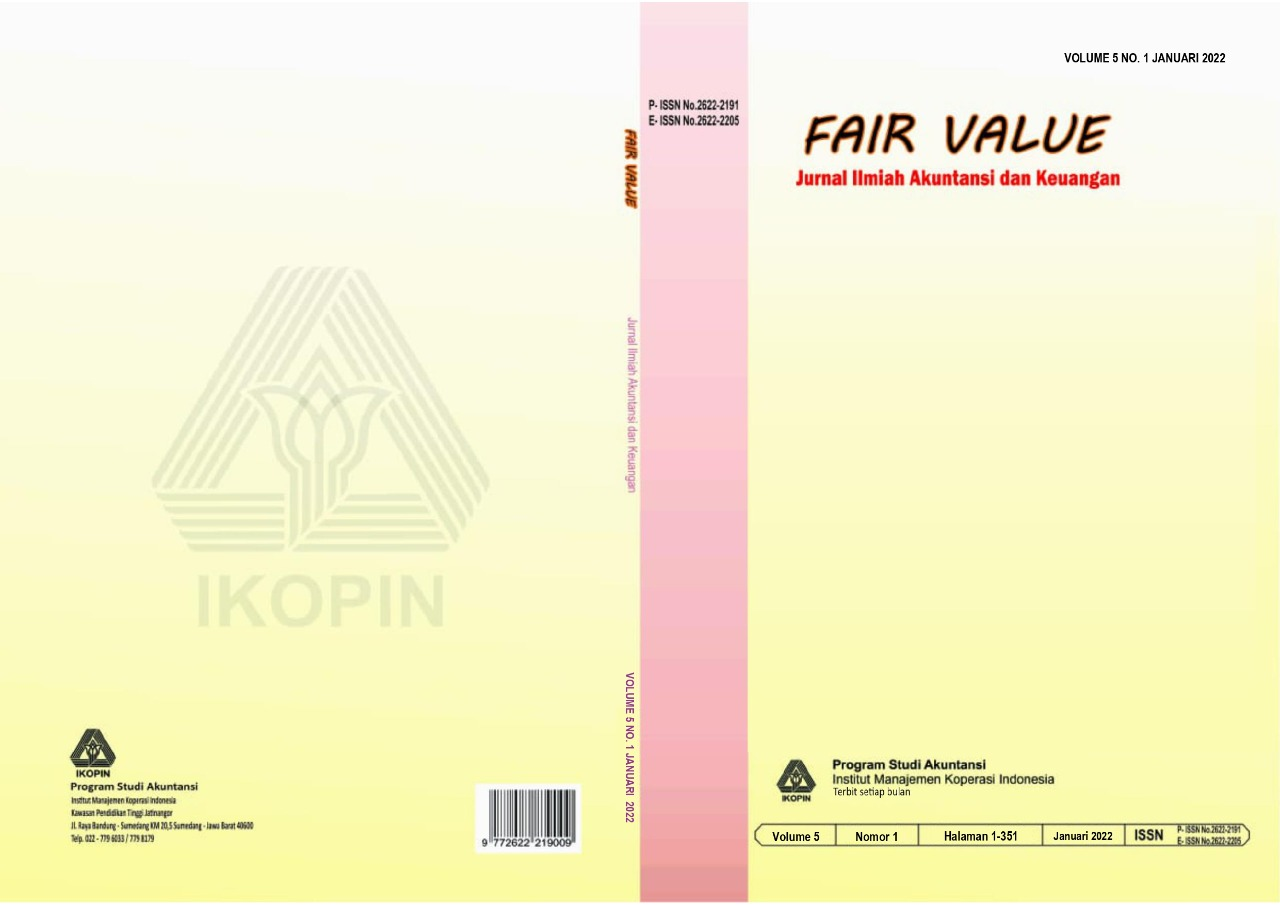Akuntansi berbasis website melalui aplikasi Dac Easy Accounting (DEA) dalam meningkatkan minat belajar mahasiswa
Main Article Content
Abstract
Educational models of accounting practices in higher education have been introduced, but there are still many obstacles in the use of accounting software. An application that can assist students in operating the accounting process, especially in preparing financial statements using formulas in a computerized system, is Dac Easy Accounting (DEA). Given the upcoming economic challenges, students need to master information technology, which is an important tool in their careers in the field. This study aims to analyze Website-Based Accounting through the DEA application program in increasing student interest in learning in Garut Regency. The research method used is descriptive comparative, with the aim of describing the facts and relationships that exist. The results showed that there are factors that can increase students' interest in learning and practicing DEA applications in accounting. Internal factors include motivation, interest, and encouragement of competition in the world of work. While external factors involve the role of family, facilities, and environment. To support students' understanding, adequate learning facilities are needed, as well as professional and experienced teachers.
Article Details
References
Ahmad, N., Ilato, R., & Payu, B. R. (2020). Pengaruh pemanfaatan teknologi informasi terhadap minat belajar siswa. Jambura Economic Education Journal, 2(2), 70–79. https://doi.org/https://doi.org/10.37479/jeej.v2i2.5464
Arikunto, S. (2013). Prosedur penelitian suatu pendekatan praktis. Rineka Cipta.
Hartanti, R., & Lubis, R. H. (2021). Persepsi mahasiswa akuntansi terhadap teknologi informasi yang harus dikuasi oleh auditor (Studi kasus Universitas Muslim Nusantara Al-Washliyah). Jurnal Penelitian Ekonomi Manajemen, 1(3), 200–208. http://jurnalpatronisntitute.org/index.php/jurpem/article/view/50
Hutauruk, M. R. (2017). Akuntansi perusahaan jasa aplikasi program zahir accounting. Indeks.
Jogiyanto. (2017). Sistem informasi keperilakuan. Andi Offset.
Juita, V. (2013). Persepsi mahasiswa terhadap mata kuliah sistem informasi: Studi kasus mahasiswa jurusan akuntansi Universitas Andalas. Akuntansi dan Manajemen, 8(1), 39–54. https://doi.org/https://doi.org/10.30630/jam.v8i1.127
Kandouw, V. M. (2013). Evaluasi sistem informasi akuntansi penerimaan kas pada PT Catur Sentosa Adiprana Cabang Manado. Jurnal EMBA: Jurnal Riset Ekonomi, Manajemen, Bisnis Dan Akuntansi, 1(3), 433–442. https://doi.org/https://doi.org/10.35794/emba.1.3.2013.2058
Kurniati, Y. A. (2018). Sistem perhitungan akuntansi secara manual dan secara otomatis pada PT. BPRS Aman Syari’ah Sekampung (Thesis). IAIN Metro.
Laing, G. K., & Perrin, R. W. (2012). Integration of a computer application in a first year accounting curriculum: An evaluation of student attitudes. Higher Education Studies, 2(2), 1–8. https://doi.org/https://doi.org/10.5539/hes.v2n2p1
Machera, R. P., & Machera, P. C. (2017). Computerised accounting software; A curriculum that enhances an accounting programme. Universal Journal of Educational Research, 5(3), 372–385. https://doi.org/10.13189/ujer.2017.050310
Maulana, F. (2022). Pengaruh kompetensi pengguna sistem informasi akuntasi terhadap kualitas informasi akuntansi. Fair Value: Jurnal Ilmiah Akuntansi dan Keuangan, 5(4), 1803–1818. https://doi.org/https://doi.org/10.32670/fairvalue.v5i4.2728
Moradi, Z., Nouri, M. F. A. B., Mohammadi, M., Esfandnia, F., Taovsi, P., & Esfandnia, A. (2015). Evaluation of stress factors among the elderly in the nursing homes for the elderly (Eram and Mother) in Kermanshah. Journal of Medicine and Life, 8(Spec Iss 3), 146–150. https://www.ncbi.nlm.nih.gov/pmc/articles/PMC5348947/
Mudmainnah, N. F., Deskoni, D., & Rusmin, A. R. (2017). Pengaruh software MYOB accounting terhadap hasil belajar akuntansi siswa di SMA Muhammadiyah 6 Palembang. Jurnal Profit, 4(1), 44–51. https://doi.org/10.36706/JP.V4I1.5578
Mulyadi, M. (2014). Sistem akuntansi. Salemba Empat.
Permatasari, T., & Santoso, N. (2022). Pengembangan sistem informasi akuntansi berbasis web (Studi kasus: Language Center Kediri). Jurnal Pengembangan Teknologi Informasi dan Ilmu Komputer, 6(1), 411–417. https://j-ptiik.ub.ac.id/index.php/j-ptiik/article/view/10526
Putra, Z. (2019). Penerapan metode data envelopment analysis untuk mengukur kinerja program studi di Universitas Teuku Umar. Akbis: Media Riset Akuntansi dan Bisnis, 3(1), 73–91. https://doi.org/https://doi.org/10.35308/akbis.v0i0.1022
Rosidi, A. (2019). Pendekatan psikologi dalam studi Islam. INSPIRASI (Jurnal Kajian Dan Penelitian Pendidikan Islam), 3(1), 45–54. https://core.ac.uk/works/77429749
Susilowati, Y. (2019). Modul e-commerce-teaching factory for students. Mutiara Publisher.
Ugwulashi, C. S. (2017). Educational facilities: Appropriate strategy for school safety management in Rivers state, Nigeria. Development, 6(2), 13–22. https://doi.org/http://dx.doi.org/10.6007/IJARPED/v6-i2/2933
Vatanasakdakul, S., & Aoun, C. (2011). Why don’t accounting students like AIS? International Journal of Educational Management, 25(4), 328–342. https://doi.org/10.1108/09513541111136621

